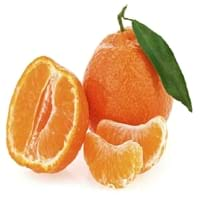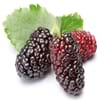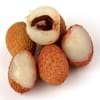Health Benefits
Anti-aging benefits, Boosts immune system, Cancer prevention, Flu treatment, Hair care, Heart care, Improves eye vision, Increases metabolic rate, Kidney stone treatment, Maintains healthy cholesterol level, Skin cleansing, Skin rejuvenation, Treatment of common cold, Treatment of skin Diseases
Cancer prevention, Heart care, Increases metabolic rate, Reduces stress
General Benefits
Boosts immune system, Controls blood sugar levels, Flu treatment, Improves eye vision, Maintains healthy cholesterol level, Treatment of common cold
Boosts immune system, Controls blood pressure, Digestive aid, Eye care, Helps in weight loss
Skin Benefits
Anti-aging benefits, Skin cleansing, Treatment of skin diseases
Brightens and lightens complexion, Treatment of acne, Treatment of dark spots
Hair Benefits
Protects hair, Regulates hair growth
Promotes longer and healthier hair, Protects hair
Allergy Symptoms
Breathing difficulty, Itching, Nasal congestion, Redness of eyes, Runny nose, Sneezing
Abdominal pains, Breathing difficulty, Coughing, Diarrhea, Drop in blood pressure, Fainting, Runny nose, Skin rash, Sneezing, Swelling of mouth, tongue or lips, Vomiting
Side Effects
Decrease in blood sugar levels, Allergic reaction
Allergic reaction
Best Time to Eat
Best if taken as a breakfast (or empty stomach), As a snack in the late afternoon, Don't consume at night and before bed, Eat the fresh ones, avoid mixing with any other foods, don't eat after meal., Morning time (before lunch)
As a snack in the late afternoon, Don't consume at night and before bed, Eat the fresh ones, avoid mixing with any other foods, don't eat after meal., Morning time (before lunch)
Vitamin A (Retinol)
Not Available
Vitamin B5 (Pantothenic Acid)
Not Available
Vitamin C (Ascorbic Acid)
Vitamin K (Phyllochinone)
Lutein+Zeaxanthin
Not Available
Calories in Fresh Fruit with Peel
Not Available
Calories in Fresh Fruit without Peel
Not Available
Calories in Frozen Form
Not Available
Calories in Dried Form
Not Available
Calories in Canned Form
Not Available
Not Available
Season
Spring, Summer
Autumn
Varieties
Charparral, Pendula, Teas, Bellaire and Lingan
Clemenules or Nules and Nadorcott
Color
Pink, Purple, White
Orange
Taste
Tart
Sweet, Tangy, Tart
Soil Type
Clay, Loam
Loam, Sandy, Well-drained
Climatic Conditions
Sunny
Warm to hot climate
Facts about
- It can take up to 10 years for a tree to produce mulberry fruit.
- Mulberry leaves are fed to silkworms to enhance silk production.
- In Germany, they say that devil uses root of mulberry tree to polish his boots.
- Clementine was first grown at the citrus research center in USA in 1909.
- It is called as"Christmas orange" as it's limited growing season falls during winter.
- It's a hybrid between Mediterranean and Oranges.
Other Countries
Colombia, Egypt, India, Indonesia, Kenya, Mexico, Pakistan, Peru, Russia, United States of America
Argentina, Brazil, Egypt, Italy, Japan, Morocco, Turkey, United States of America
Top Importer
Not Available
United States of America
Botanical Name
Morus Alba
Citrus clementina
Synonym
Morus atropurpurea or Morus multicaulis
Not Available
Subkingdom
Tracheobionta
Tracheobionta
Division
Magnoliophyta
Magnoliophyta
Class
Magnoliopsida
Magnoliopsida
Subclass
Alismidae
Rosidae
Species
M. alba
C. clementina
Generic Group
Mulberry
Citrus fruit
Difference Between Mulberry and Clementine
We might think that Mulberry and Clementine are similar with respect to nutritional value and health benefits. But the nutrient content of both fruits is different. Mulberry and Clementine Facts such as their taste, shape, color, and size are also distinct. The difference between Mulberry and Clementine is explained here.
The amount of calories in 100 gm of fresh Mulberry and Clementine with peel is 43.00 kcal and Not Available and the amount of calories without peel is Not Available and 47.00 kcal respectively. Thus, Mulberry and Clementine belong to Low Calorie Fruits and Low Calorie Fruits category.These fruits might or might not differ with respect to their scientific classification. The order of Mulberry and Clementine is Rosales and Sapindales respectively. Mulberry belongs to Moraceae family and Clementine belongs to Rutaceae family. Mulberry belongs to Morus genus of M. alba species and Clementine belongs to Citrus genus of C. clementina species. Beings plants, both fruits belong to Plantae Kingdom.









